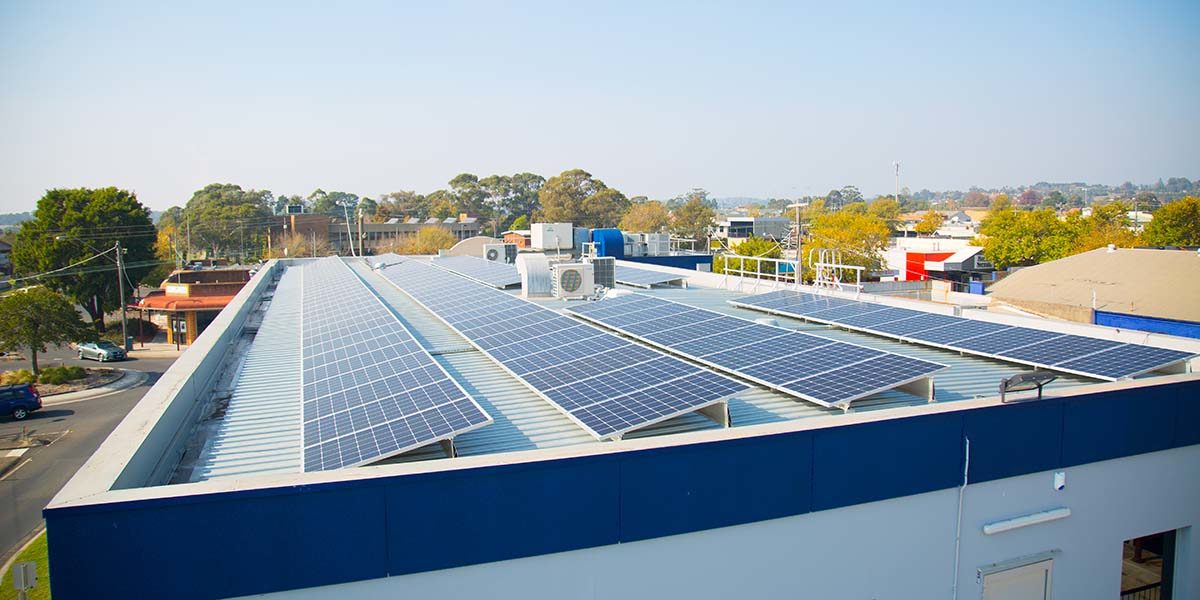Bank of Australia has pledged to go 100% renewable by next year. Through its commitment, the bank will cut its emissions by more than half while securing electricity at low cost and responding to customer demand for leadership in growing renewable power markets.
As it joins RE100, a global corporate leadership initiative that brings together 168 companies committed to sourcing 100% renewable electricity, Bank of Australia has called on more companies to seize the opportunity to lead the growing corporate push for clean energy in Australia.
Commonwealth Bank of Australia was the first Australian business to join RE100 in November. On the back of a 12 year power purchase agreement, CBA is sourcing energy from the largest wind farm in New South Wales – the 270 MW Sapphire Wind Farm – as of January this year, and is moving towards 100% renewable power by 2030.
Some of the RE100 members that have their offices in Australia have also taken their business 100% renewables, such as global confectionary giant Mars, which has signed a solar PPA for all of its electricity from a 200 MW solar farm in Victoria by 2020. Bank of Australia says going all big on renewable power is a smart business decision.
“Clear action on climate change is something our customers expect of us, and it’s a key reason people join Bank Australia,” said Damien Walsh, Bank Australia Managing Director. “We’ve been working towards 100% renewable electricity since 2015, so we’re pleased to sign up to RE100 and encourage other businesses in Australia to do the same.”
Bank of Australia is one of the 14 members of the Melbourne Renewable Energy Project, which combines purchasing power to support the construction of the 80 MW wind farm at Crowlands, near Ararat, with a long-term PPA inked with Pacific Hydro for 88 GWh of electricity per year. The wind farm started supplying power to the grid in January allowing the City of Melbourne to announce the switch to 100% renewables.
Previously, the bank has seen significant financial benefits from its existing renewable projects as the price of renewable energy has fallen. In 2015, the company doubled the size of its existing solar rooftop project on its Victoria headquarters for a quarter of the original price.
“As global renewable energy prices continue to drop, Australian companies are waking up to the business benefits of sourcing clean power,” Sam Kimmins, Head of RE100, The Climate Group. “With the country currently at a crossroads between the fossil fuel sources of the past and the clean energy systems of tomorrow, businesses are starting to lead the way.”
Indeed, Australian companies are starting to see bottom line benefits of renewable energy. To meet the growing demand, innovative PPAs and services for C&I customers have emerged at pace with a number of flexible new solar PV contract models and services on offer.
Saving on electricity bills is one of the key drivers for Australian commercial and industrial energy customers with annual energy use of more than 100 MWh per year to negotiate a renewable energy PPA. As shown by the latest figures from commercial electricity retailer Flow Power, its high-use energy customers have collectively saved $14 million with power purchase agreements since the start of 2018.
Knowing that “a well negotiated PPA can potentially provide savings between 15 and 47% on the energy component of a typical electricity bill expected in 2020”, a growing number of Australian companies are eager to make the switch. Fortunately, record investment in clean energy is making this possible. In 2018, large-scale renewables investment in Australia totaled more than $20 million, with almost $11.5 billion in big PV projects currently under construction.
This content is protected by copyright and may not be reused. If you want to cooperate with us and would like to reuse some of our content, please contact: editors@pv-magazine.com.









By submitting this form you agree to pv magazine using your data for the purposes of publishing your comment.
Your personal data will only be disclosed or otherwise transmitted to third parties for the purposes of spam filtering or if this is necessary for technical maintenance of the website. Any other transfer to third parties will not take place unless this is justified on the basis of applicable data protection regulations or if pv magazine is legally obliged to do so.
You may revoke this consent at any time with effect for the future, in which case your personal data will be deleted immediately. Otherwise, your data will be deleted if pv magazine has processed your request or the purpose of data storage is fulfilled.
Further information on data privacy can be found in our Data Protection Policy.